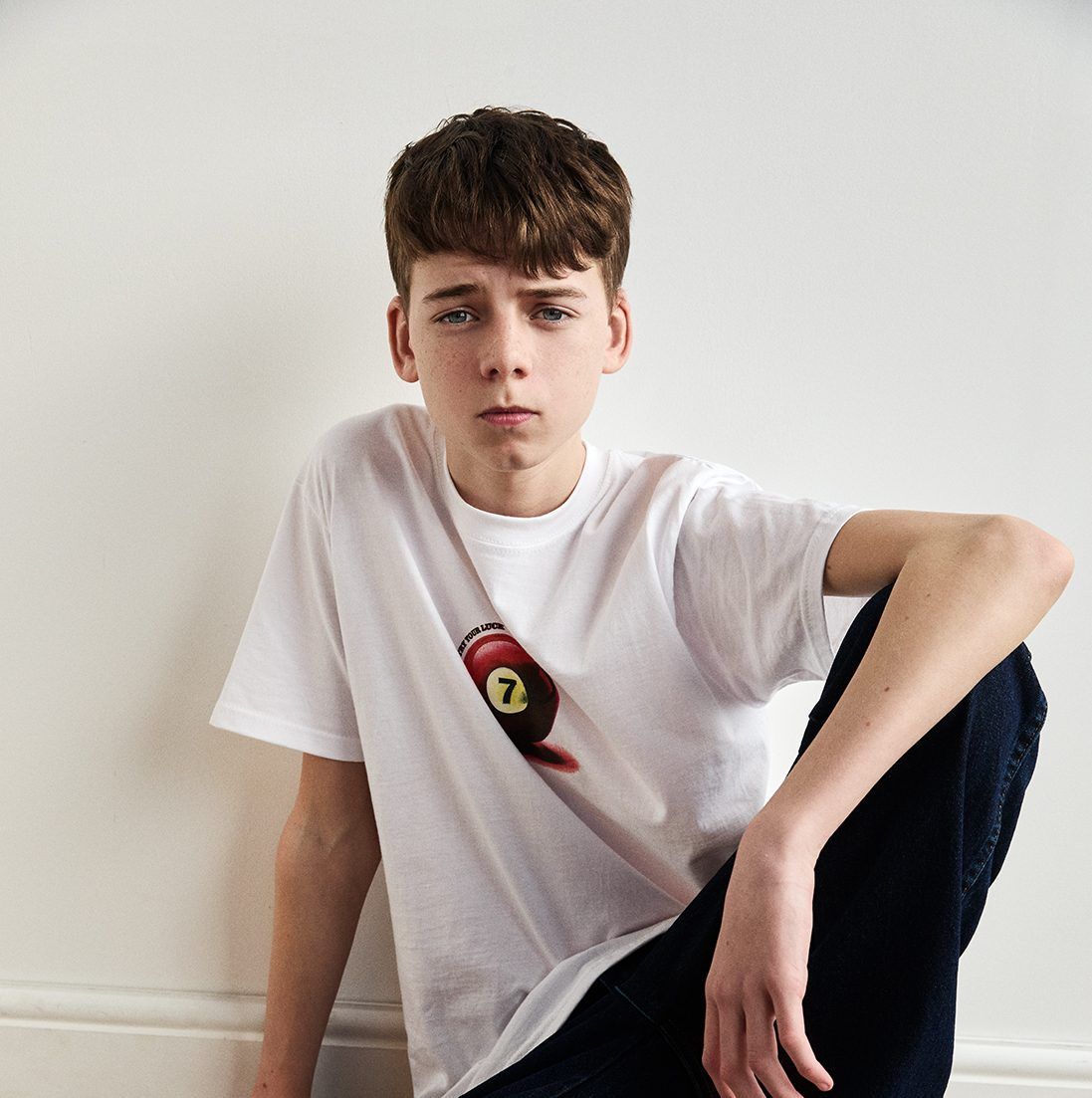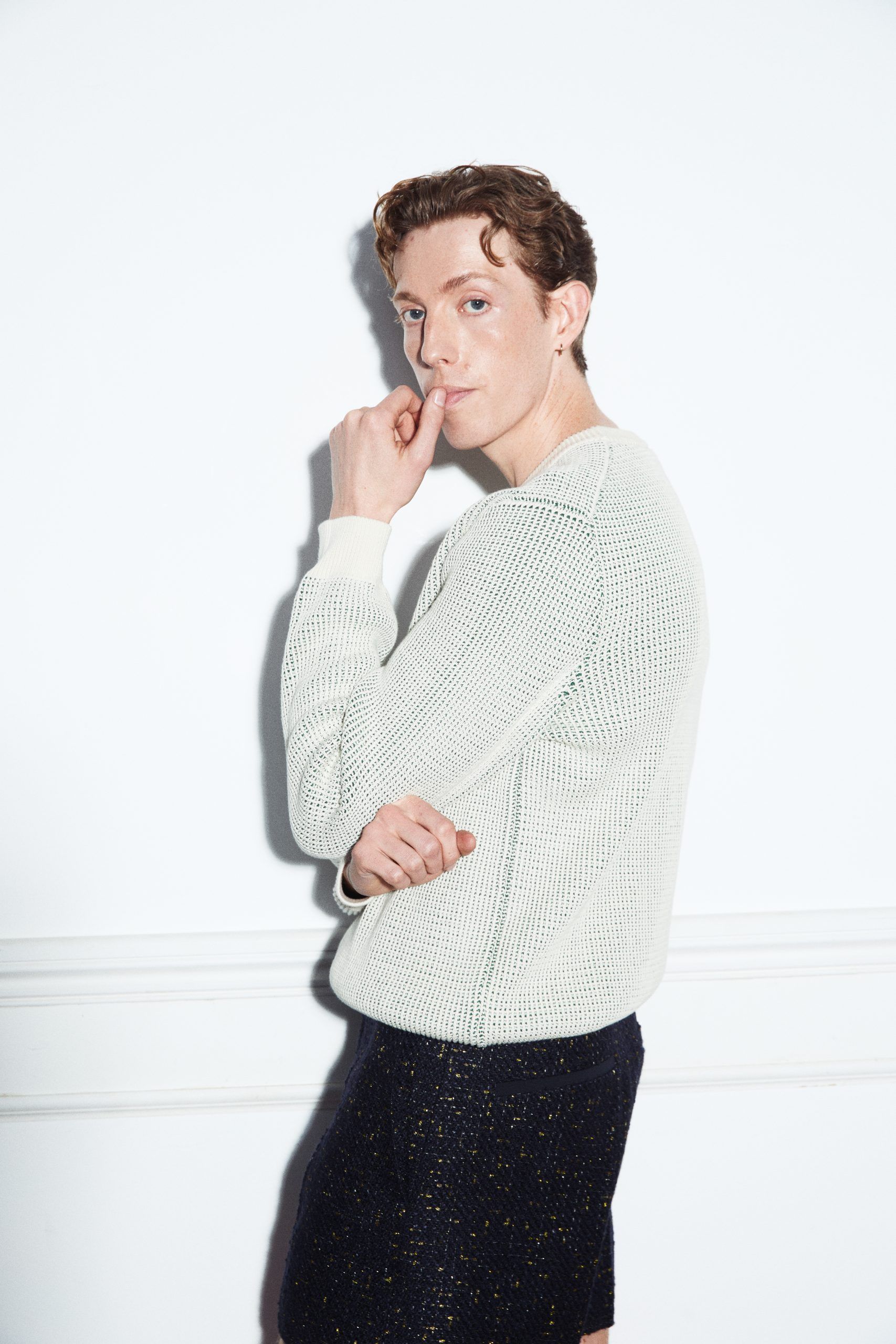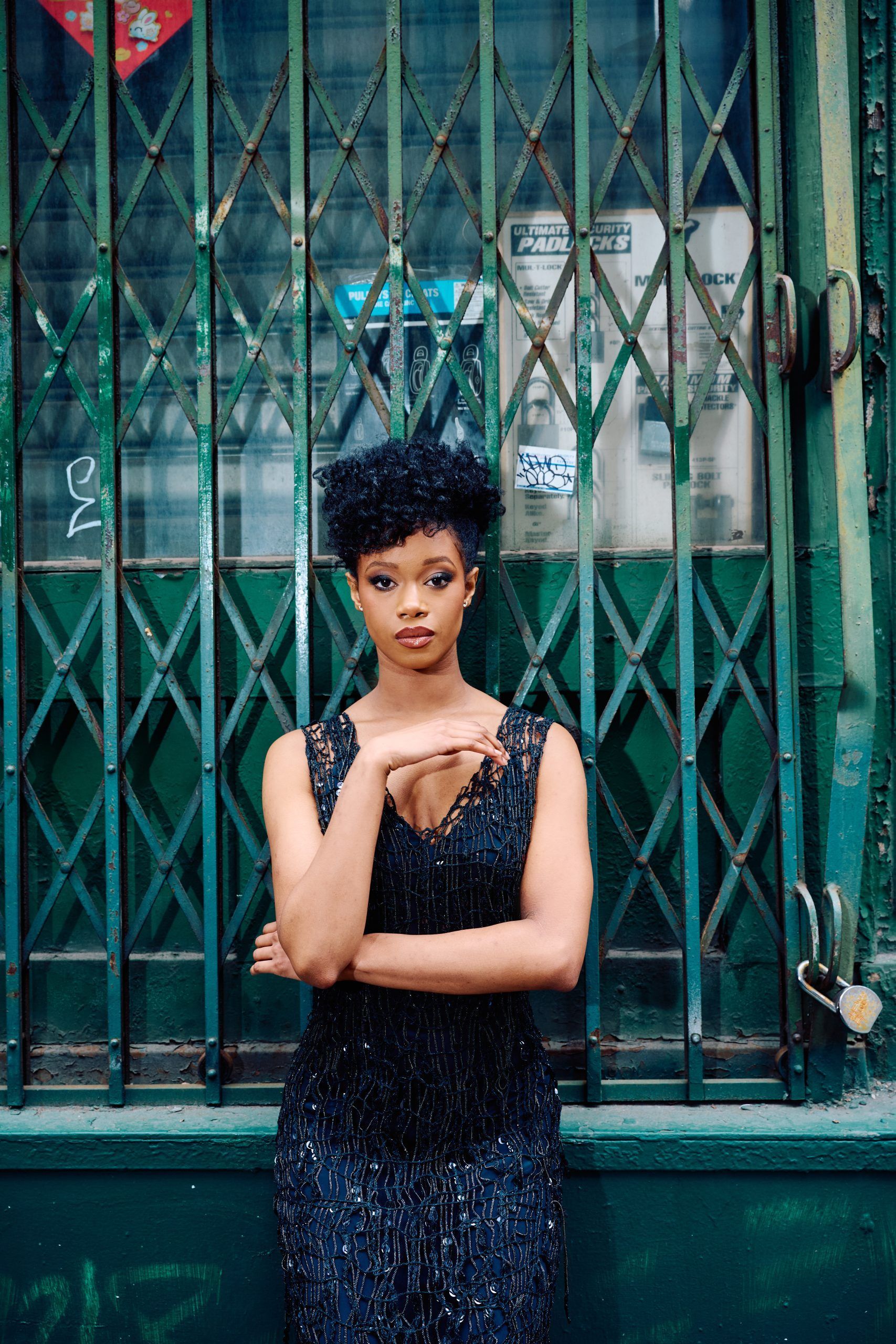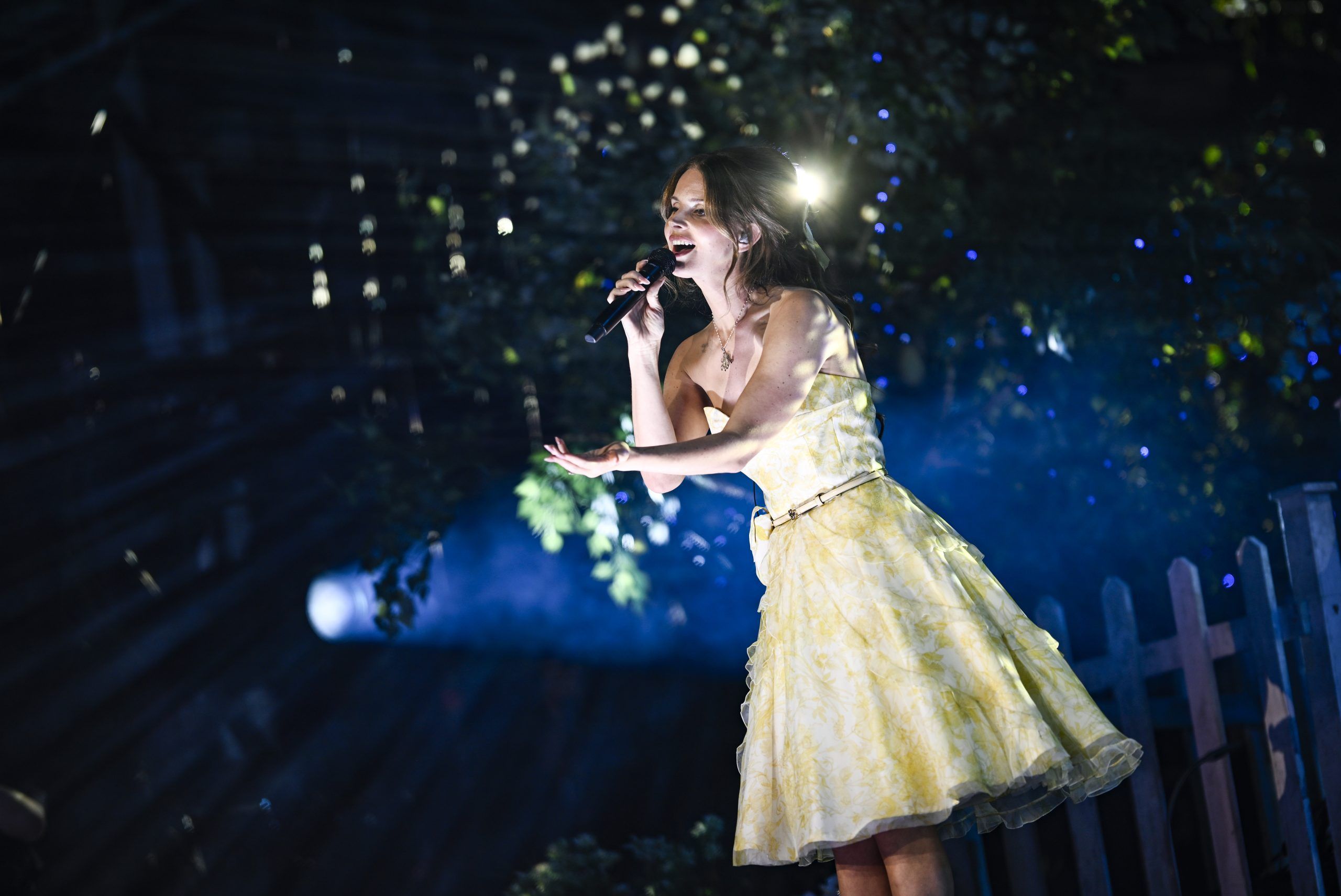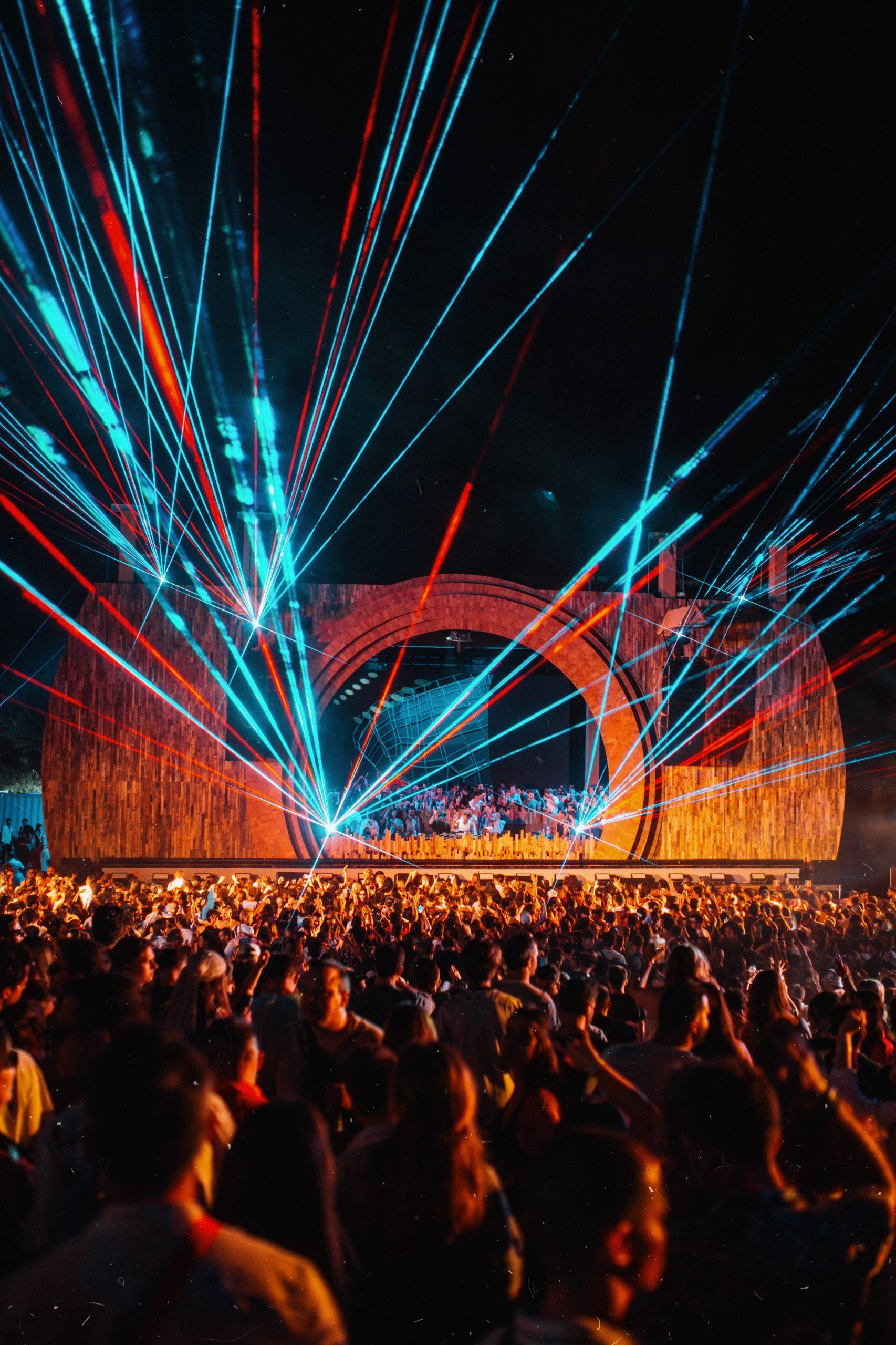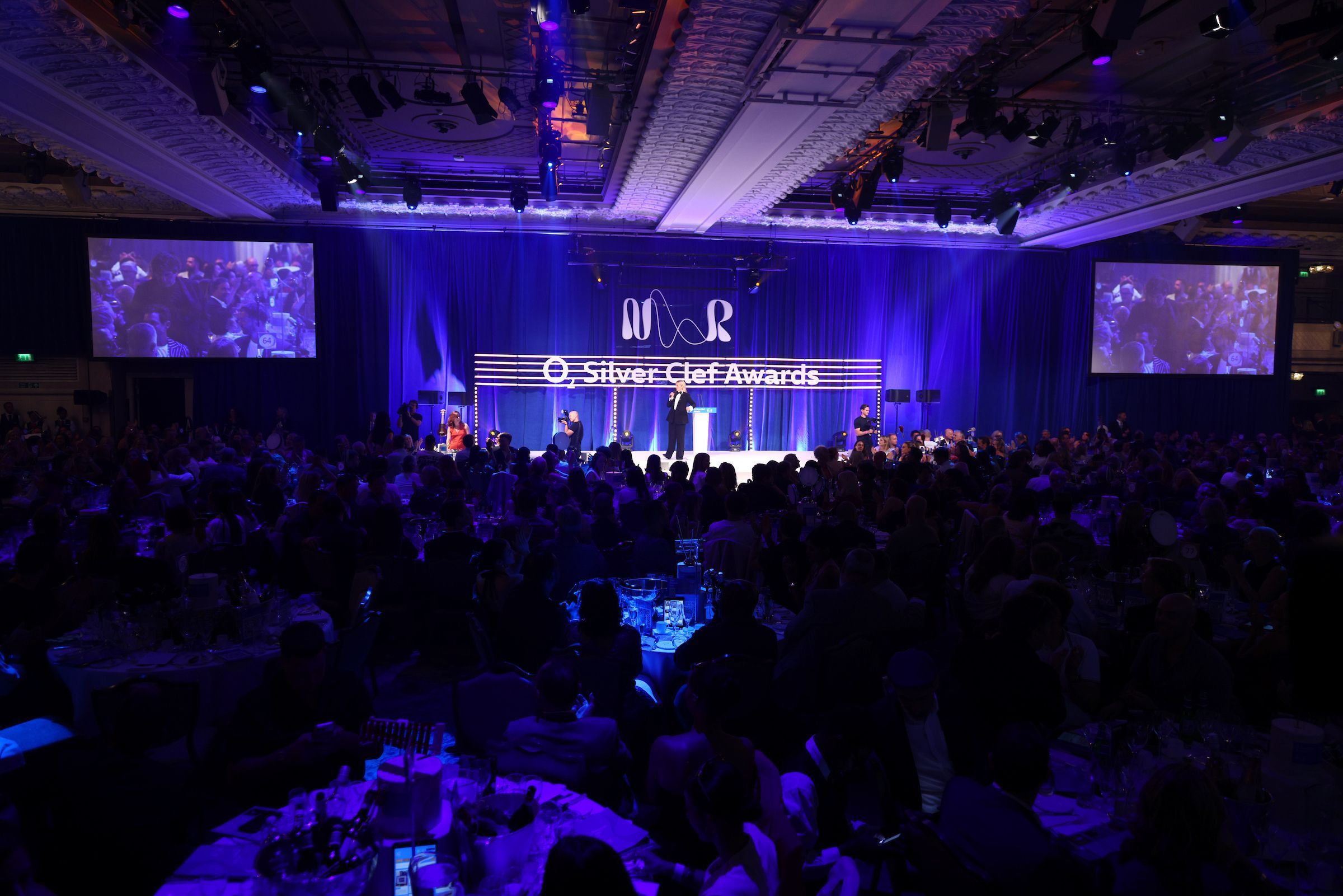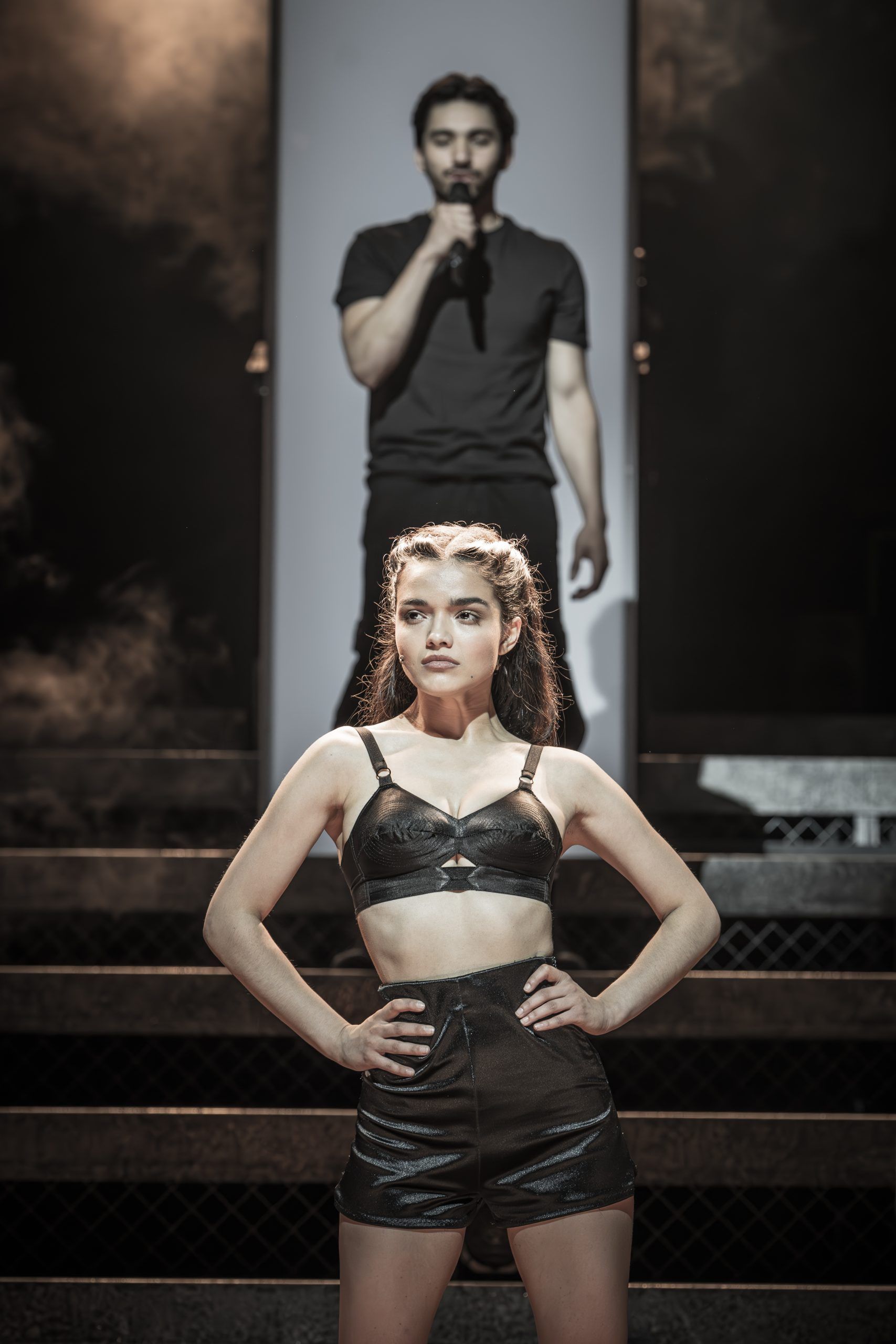2020 is, in many ways, the year of Russell Tovey. With an incredible performance as Nathan in the ITV mini-series The Sister to the announcement of his selection as a 2021 Turner Prize judge, Russell Tovey continues to prove why he’s one of the most recognizable names in the acting and art communities.
Beginning his career in the 1990s, Tovey credits his work on the stage as the driving force behind his success. His role in the Alan Bennett play The History Boys is what ultimately propelled him into recognition and allowed him to blossom into the type of actor he always strived to become.
In addition to starring in captivating roles such as George Sands in Being Human, Steven in The Good Liar, and Daniel Lyons in Years and Years—which landed him a Critic’s Choice Award nomination—Tovey has established a name for himself in the world of art. Partnering with gallerist Rob Diament, the two created the intensely popular Talk Art podcast where they discuss art, artists, and artistic movements with notable guests. The format is approachable, encouraging, and influential, and has since led to a book deal for the pair.
1883 spoke with Russell Tovey about his preparation process for The Sister, what it was like to write the Talk Art book and curate his own gallery exhibition, and what it means to be selected as a Turner Prize judge.
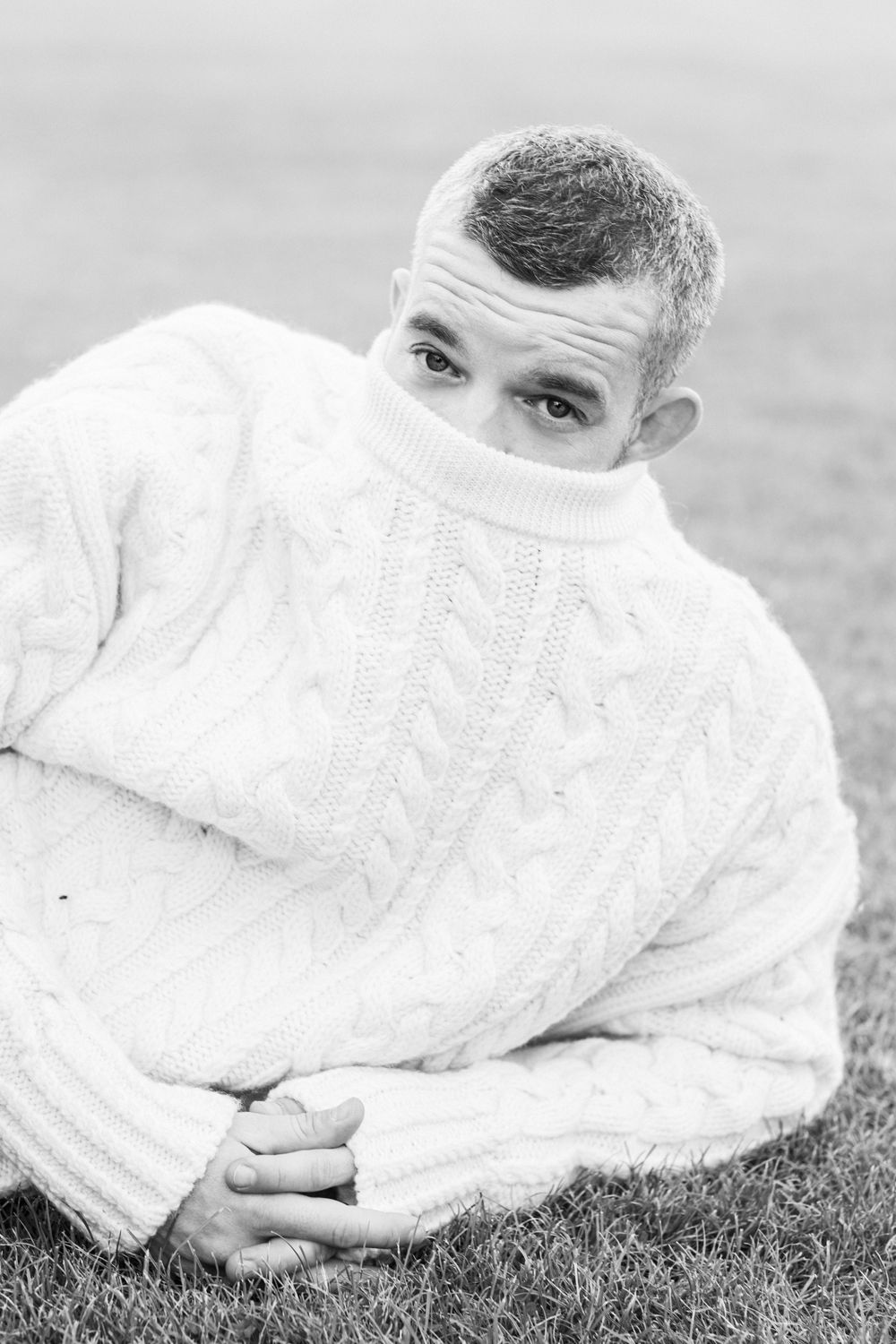
You’re slated to star in ITV’s The Sister, which is a pretty haunting show filled with dark emotions. What was your preparation process like for this role? Were there specific things you did or certain songs you listened to help transport you into Nathan’s mind?
Oooh, songs! I mean yeah, music does play a big part in finding a character and creating a mood within yourself. To get into the role…so, there are three ages. This is told over three timelines. So, it’s about finding the energy for each of the timelines. That was a very important thing I wanted to establish so I knew where his energy sat. We see him where he’s really young before the incident has happened and he’s a lot more buoyant and positive and keen, eager, upbeat, engaging with everyone. This incident happens and he’s in a state of shock. Then later on in life, he’s managed to find a way, a coping mechanism, and an ability to survive. He’s very restrained, everything is a lot more edited, everything is a lot more thought out. So, it was about finding those energies and as soon as I established where those energies were and where they sat in my body, and how he moved in these different periods, I was then able to track how he was going to develop throughout the story.
That’s interesting to have to break it down into those separate parts and timelines. And obviously, there are numerous scenes throughout The Sister where you’re frightened or anxious or on the precipice of a panic attack—how did you maintain your heightened energy throughout the filming process? What were the challenges of remaining in this darkened headspace between takes?
I think committing to playing the role, having authenticity with Nathan was the priority, so I knew I was going to be a bit screwed up while we were doing it but not as much as I actually was in the end. It was a relentless experience, but it felt like you had to go through that, for me, to feel satisfied that I was able to commit fully to telling his story. So, on set, it was a lot of moments of silence for me. And I’m usually someone who’s quite jovial—I’m usually someone who’s a bit of a joker on set, I like to lighten the mood and I’m always really chatty with the crew. And I still had moments like that, definitely, but I knew in my head I was going to be a lot more separated and distant on this one. And it felt like the work was the priority. And trying to get that balance where you have that work and the switching off thing was a lot harder with this role. But I went with a challenge because I wouldn’t have wanted this coming out and feel dissatisfied with my commitment to it.
So, is that what drew you in initially when you received the script for this role? When you first received the script for The Sister, did you say, “Okay, I absolutely need to audition for this role” because you knew it would be a challenge? Or were there other elements that were intriguing to you?
I think the challenge was an enticing thing about the script. It was the dialogue. It was the character who is fundamentally a decent guy, who something really shit happens to, and how that affects his life. And how he maintains an existence even though all this stuff is going on in his head—all this anxiety and paranoia—and yet on the outside he’s kind of like…My friend used to work at TGI Friday’s, and this is a weird analogy, but they have a thing where they call them “swans”. So, on the surface, you’re gliding, and this is all the waiters and waitresses and servers, and underneath your feet are paddling quick through all the weeds, kicking off, and trying to keep going. But on the surface, you’re a swan, you’re gliding. And I feel like Nathan is this type of guy who underneath the surface is kicking, and screaming, and scratching, and trying his hardest. But on the surface, he’s just gliding, and just existing, and no one is paying him any attention because it looks like he’s got it under control. That’s what really interested me in his character, was trying to find what that playing space would be.
That’s such an amazing analogy because you’re giving off the presence of being calm and composed, but no one really understands the effort you’re putting in to achieve that.
Underneath the surface, exactly.
I love that. I wanted to switch gears a bit because you have so many amazing projects going on, and I wanted to start by saying that I am such a huge fan of your podcast, Talk Art.
Yeah!
I listen to it religiously. I love art, but it’s very hard to discuss because I just learn about it in my free time, so it’s great to have this platform that you and Rob Diament created because you make art so digestible for everyone. What inspired you two to craft the podcast into this type of format? Anyone can listen to the episodes then look at the corresponding Instagram posts you make to learn about the pieces featured in the episode, which is great.
It came from us being geeks and wanting to set something up where we could meet like-minded geeks and meet our heroes. It was a passion project. Rob was invited to be a guest on a podcast to talk about artist editions, he runs an artist editions company called Counter Editions. And prior to him working there we used to buy, and we still do, buy prints…multiples…from the site, so they said, “Did you want to bring someone on to talk about it?” and he said, “Oh, I’ll bring Russell on because he collects, and we know each other and he’s one of my best mates and we love art”. And we did this interview, and they were meant to be asking us loads of questions, but we ended up just talking to each other and they couldn’t get a word in edgewise. And afterwards my parents…his mum and my mum said, “You know, I’ve learned more about both of your passion about the art world and why you’re so into it through this [podcast] conversation than we have in the whole time of talking to you in the flesh about it”. So, they said why not go off and do it yourselves? So, I said, well why don’t we just get a studio and see what happens. And we got a few friends, and they’ll want to talk about art and let’s just see what happens. And it has just grown and grown and now we’ve got a book deal that’s out next year and we’ve got loads of amazing guests coming on now and loads of people who want to be involved. And it has become this rite of passage thing for artists to do a Talk Art, and we’ve had like over a million and a half downloads, and it’s growing and it’s just become such an exciting thing. That we created this out of love, out of being geeks, out of passion, and we’ve created something that we can share. And the fact that such a niche subject such as art is getting such a mainstream response feels…I just feel incredibly proud of our achievement with that. And the fact that we’re still going…it’s limitless. Art is limitless. Culture is limitless. So, for us, it’s like we are only ever just starting on this.

It has been amazing even listening to it from the very first one you guys produced to the current episodes…
Aww, you’re amazing! Do you have favorites?
Oh my gosh, I do! I love the one you just did with Noel Fielding. I thought that was incredible. I really enjoyed the conversation you two had with Caspar Jopling and Ellie Goulding. I thought that was so interesting because it was great to see his perspective on it as someone who’s involved in the art world and then how she built her interest through his passion as well as her own existing passion for art. It was great. I listen to it when I’m making breakfast!
I think that’s because we facilitate an opportunity for people to talk about a side of themselves which a lot of people won’t ever ask them or know about. And when it comes to, obviously artists, but people like Ellie Goulding or Noel Fielding, people don’t know that Noel makes art. There’s only a small portion of people that do. But now people will go, “Oh, okay!” and with Ellie Goulding, having a husband who’s a gallerist and a curator and she’s a collector as well, it’s something that people will go, “Oooh, okay!”. It’s something that people are very knowledgeable about but they don’t get asked about it very much, so when they come on Talk Art, it’s like Yes! Because now they can join the geekhood and be part of this kind of crew.
I love that. I similarly feel like that because I want to ask people about things that aren’t directly tied to their careers—I want to get to know them as a whole individual. I enjoy the conversations you and Rob have; they feel natural and as a listener, you feel like you’re just listening to friends talk. It doesn’t feel like an interview.
Great! Yeah, totally. That’s because when people usually talk about art it’s usually done in such a reverential way. It’s elitist, it’s academic, there are all the references and you don’t know what they are. And I said from the off, I said, “Look, I don’t know what you’re saying, can you just tell me what that is?” or if I think we make assumptions of our listeners that they’re going to know what that is, can we just explain that? And that’s always been my thing. This has to be for everyone. We can’t alienate people. This shouldn’t be a member’s club. The reason why there’s so much public art in the world is because it’s for the public. Because it makes humanity feel happier to be around and to learn and engage with and to recognize what it is to be part of the human race through art. Those stories are told through art. When everyone is dead and gone, what’s left behind? The art.
It is so much about connection. Like, your connection to the art and then your ability to connect with other people because of the art, because of your shared interest. It’s nice that you do it in this approachable way because people like me, who don’t understand the technicalities of it all, can listen to it and feel like we learned something today, or that I can check out a new artist I hadn’t heard about before.
Exactly!
I’m so excited about the Talk Art book as well! Congratulations! That’s due to be published on May 6, 2021. What can listeners of the podcast, and those who haven’t listened yet but share an interest in art, expect from this book? Were there goals you two hoped to achieve through the publication of this book that vary from the goals you have for the podcast?
Our publisher came to us and just said, “Do you want to do a Talk Art book?” and my first assumption was, Right, they’re going to give us a wedge of cash and then they’re just going to transcribe all the interviews. Great, we don’t have to do anything! And they went, “No, no, no, we want you to write the Talk Art guide to the art world. We want this to come from you in the way that you are engaging an audience through the way you’re talking about art, we want you to write about art.” So, people can feel like they can pick it up and learn and look through and see what the art world is like from Talk Art’s point of view. So, we started writing the book at the beginning of this year and it’s been like…we’ve written a book! We’ve written essays! It feels like a really exciting thing because the reaction has been so overwhelming so far from the publishers at every point. Everybody wanted to get involved. I just hope that…in itself, it’s a beautiful object. We’ve got this amazing cover for it, and all the images, we’ve gotten so many incredible images. And new, unique artwork. We’ve gotten artworks that have been made especially for the book. I hope…we get a whole new audience engaging and that they’ll feed into each other. People will see the book and not know about the podcast and vice versa. And that feels like a really exciting thing just to kind of get Talk Art out there.
It’s amazing to think that someone can walk into a bookstore and pick it up and be like, “What’s this?” and the book makes that introduction to where the person can then say, “I loved these essays, I want to check this out further” and discover the podcast.
God, yes! We’ve made nearly 100 episodes of Talk Art and that’s over 120 hours, probably…
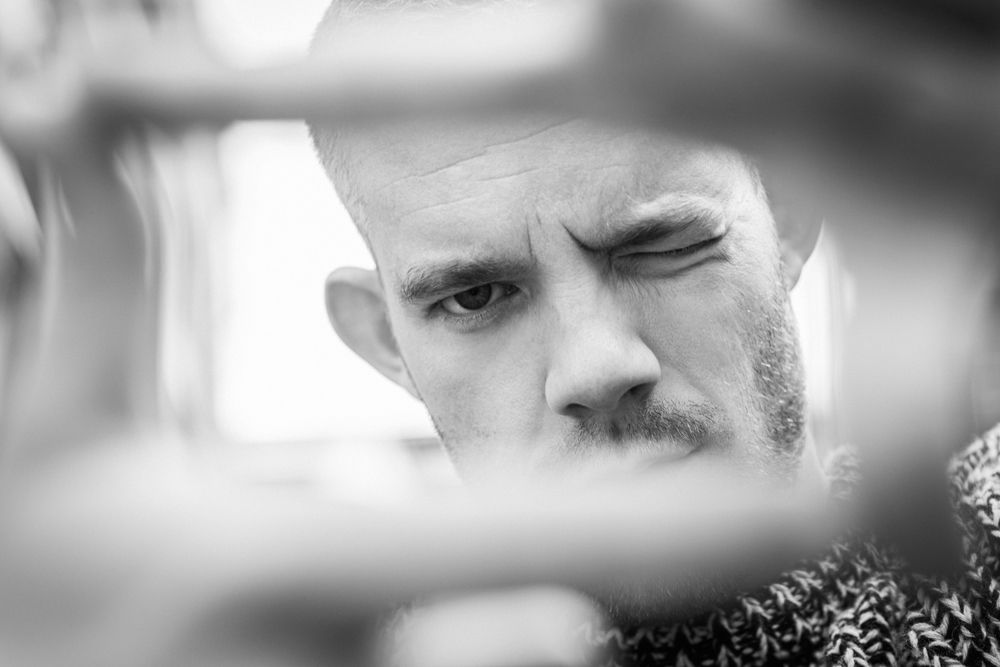
That’s a commitment.
It is! That’s a box set, that’s a proper box set. That’s a network television, 12 season box set binge.
That’s what you have to expand on now. You’ve got the Talk Art book, you’ve got the box set, you’re franchising Talk Art.
Yes! Yes, exactly! Totally, we’re gonna have merch!
I would wear Talk Art merch.
(Laughs). You are incredible.
A little t-shirt, a bag that I can bring to the store.
A hoodie, a shopping bag.
I would love that. I do that anyway. I have a Joan Didion bag that I bring to the stores around here.
Oh, wow! Have you seen…? You’re a big literature fan, then? And you’re a big reader? So, there’s an artist that has done something really interesting called Seth Bogart. And he’s at a gallery called the Fierman Gallery, and he’s a ceramicist. And he’s basically done ceramic books. So, there’s Joan Didion’s book there, he’s done Larry Kramer’s Faggots. He’s done all these iconic…he was part of the Circus of Books story and he’s….you should look him up! Because he’s made all these ceramic book covers and they’re quite like whimsical and naïve but there’s also something really exciting about them in the fact that they’re so recognizable and accessible. And it’s made these covers kind of like popular culture. And you’ll recognize a lot of them, and I think you’ll really like them.
That’s amazing! Thank you so much for suggesting that. I wrote down a note so I’m definitely going to have to pick that up. That sounds incredible.
I think you’ll really like it!
I was interested if you could recall the first time you saw a piece of art and it spoke to you on a visceral level where you were like, “This means something to me”?
I think…well, I grew up loving cartoons. But I think the first time I saw a work of art and it was in a book that made me go, “What the hell is this?” was Roy Lichtenstein’s Whaam! And I used to draw it over and over again. And it’s the one with the fighter jet pilot and the plane and it’s a very visceral iconic Lichtenstein that just says Whaam! And there’s an explosion and a missile is coming out of the plane, and I just remember looking at that and going, “Wow, that looks like a cartoon comic, but it’s art!”. And I just remember feeling like…what I like can also be seen as fine art and be on a gallery wall, what I’m responding to. And I think that was one of the first times that I felt something shift was seeing that in that book.
It was interesting combining—it was something you were already familiar with but you were seeing it in a different way…that it could be something on a gallery wall.
This is for me! This is my thing!
That’s incredible. I think that connection with art, whether it be actual art pieces or movies or music or literature, where you’re like, “This is for me, this matters to me” and you recognize yourself in the piece, I think that is incredible…
And you’re not being told by anyone that you need to like this, you need to appreciate this, you need to understand this. You come across it by yourself and go, what is this? This is speaking to me. That’s the best way to connect to it, without any outside influence or any received wisdom. It’s all from your heart.
I love those experiences. I’m of the mind that those specific things find you, you don’t find them. They come to you when you’re ready to receive them.
Exactly.
Your passion for art is at the forefront right now because you’re curating the Breakfast Under the Tree Exhibition for a November 14, 2020 start date—can you tell us more about your approach to this project? How did you go about selecting pieces for this exhibit?
It’s at the Carl Freedman Gallery in Margate. We were talking at the gallery about how to make a show…and this was pre-COVID. There’s a Manet painting called Le Déjeuner sur l’herbe which is like, breakfast in the greenery and the trees. And so I said, “Well, let’s name it Breakfast Under the Tree” basically. And it’s about this figuration and it’s a big, big representation of figuration. And very diverse figuration—it’s a movement that’s happening at the minute that’s so incredibly exciting. And I was, “Let’s get a diverse show up with figurative works, but not singular, it has to be groups”. Which was interesting because this was all conceived before COVID so now it makes even more of an impact because people can’t really hang around in groups and can’t have these sort of social situations and environments. So, we asked the artists if they had work already that they hadn’t shown before or they created work for the show and so many people have responded with these incredible new works of art. And so many artists, a lot are American, are going to be shown in the U.K. for the very first time in my show. And artists like Salman Toor who’s about to have a solo at the Whitney Museum coming up in November, he created new work for it. And Doron Langberg who has never been seen—there’s an original work by Toyin Ojih Odutola in there. These new artists that people haven’t discovered yet who are totally amazing, and I’m just so excited about getting these artists into the U.K. and the fact that they’re going to be in my show…I can’t wait.
That’s incredible! It’s amazing that you’ve been able to expand your love of art in these new ways. And you’ve just been announced as one of the judges for the 2021 Turner Prize as well! What does that mean to you to be selected for that role?
It’s the pinnacle of geekdom, isn’t it? It’s the pinnacle of everything to…establish myself enough to the point where people will look to me as some sort of expert, on some level, of a judging capacity is such a compliment. It’s such an exciting prospect. I’m so passionate about it and so in love with art, that to be approached to judge a prize…on any level…is just the biggest honor ever. And it’s something that I am so inspired to….so, it’s been going since April. The judging takes place from April to April, and it’s been tough during lockdown because so many shows you can’t go and see. But I’m just so inspired to keep seeing art. And it gives me more of an excuse now so when my boyfriend is like, “Where are you going now?” I can be like, I’m going to an art gallery. And if he’s like, “Again?” I can be like Well, I’m a Turner Prize judge, so.
I have to be there.
I’m a judge, I’ve gotta go I’m sorry about this, but it’s legit. And when I’ve been going off and writing, he’ll be like, “Where you going?” and I’ll be like Oh, I’m writing, I’ve got a book deal, Steve. It’s legit. Everything is legit!
I have to do this. It’s not optional.
I have to do this! It’s contractual.
You’re obligated.
Exactly! You have to support me.
That’s great that you were selected as a judge. It’s a testament to your passion and your knowledge about art, because it shows how much you care.
I care. I really care. And I think I’ve sort of come in on the non-academic route and I’ve sort of introduced so many people to talking about art…I feel really honored. Incredibly honored to be part of the Turner legacy.
Congratulations! You’ve had such an impressive and vibrant acting career as well with notable performances in Years and Years, in which you’ve been nominated for a Critic’s Choice award, Sherlock, Doctor Who, Night Manager, and many more. Which of your projects has had the most impact on you personally and on your career?
Career and personally would have been The History Boys, that was something that changed everything. I think, and people still reference doing that play and that film and then doing it around the world, on Broadway, that changed everything for all of us boys. So, that’s a huge moment for me in my life. And looking back now even more so because it’s like…that really did happen, and that’s incredible and how now it’s still seen as a cultural zeitgeist and that’s amazing. And I guess other things…everything feeds into everything else. But it’s always plays. Plays have always been the things that have changed me and moved things on and allowed me to grow. And I guess plays such as Angels in America that was a huge turning point for me within the industry but also personally and on stage. That show is such an incredible piece of writing that I felt so honored to be able to do that. And then, a show like View from the Bridge which I did on Broadway, which was incredible, and it’s plays! I did a play called The Pass where I played a footballer that we then did a movie of, which did incredibly well, and that was great. So, plays have always been the thing that have moved me on and exposed me to further adventures.
I was interested in as well, you’ve built this career where you’re doing a lot of everything—you’re doing theatre, you’re doing film, you’re doing television—so, do you approach projects the same way when you’re on stage versus when you’re on camera?
The difference is with the plays that you get rehearsals. When you’re on screen you might have rehearsals before you do the take but otherwise…or a discussion before or a day’s reading…but you don’t really get that in-depth knowledge of the person you’re playing. So, it’s the actor’s responsibility to do that research and I always try and find who the character is and their energy, and where they sit. And I need to instinctively feel them where they are in my body so I can play them. That’s something that I’ve always instinctively done, but I’ve recognized more so as I’ve gotten older in my career that that’s been my process in myself. Trying to instinctively feel them as you’re saying the lines, as you’re existing as them. So, whatever the medium, it’s about finding the authentic truth and the core of that person.
The Sister premiered on ITV- Monday 26th October 2020 at 9pm, and as a box-set on ITV Hub. The four-part series will be stripped across Monday to Thursday.
Pre Order, Talk Art: Everything you wanted to know about contemporary art but were afraid to ask, click here
Interview by Sam Cohen
Photographer Lee Malone
stylist Dee Moran
Grooming Alexis Day
Photography assistants Ryan Rivers & Andrew Rankin


